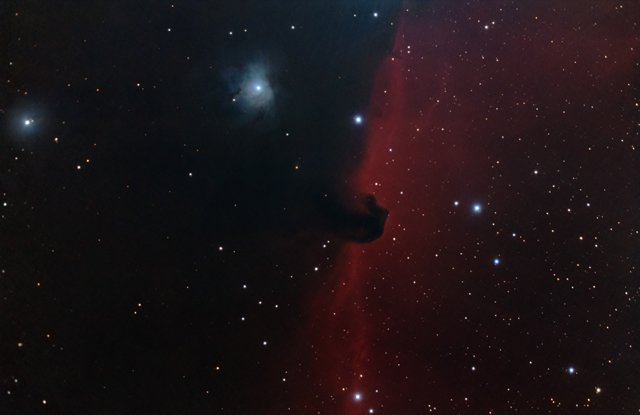
After the moon had set on Dec 1, 2014, I decided to let the camera and guiding run while I slept and take images of the Horse Head Nebula region. I managed to get 33 good sub-images before the clouds messed up the tracking.

After the moon had set on Dec 1, 2014, I decided to let the camera and guiding run while I slept and take images of the Horse Head Nebula region. I managed to get 33 good sub-images before the clouds messed up the tracking.
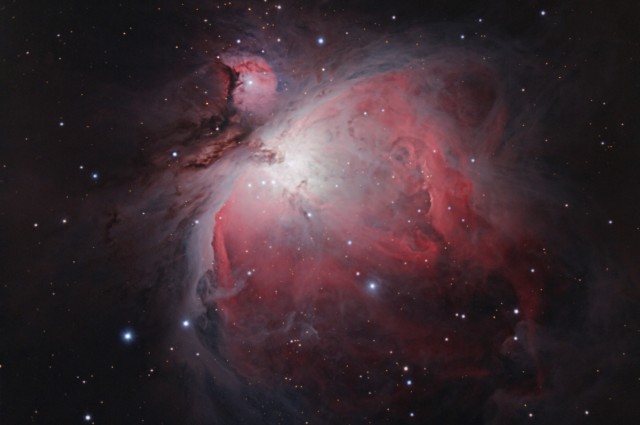
One of my first images shot through a telescope at prime focus was of M42, the Orion Nebula. It was taken with my Celestron C8 SCT and 35mm film. Here’s the latest digital version of the same object taken with the same scope. I had to work hard aligning and collimating the scope before taking the sub-images for this, but the old girl is back in shape and delivered some useful data for this often imaged object. It just fits in the field of view at 1260mm of focal length.
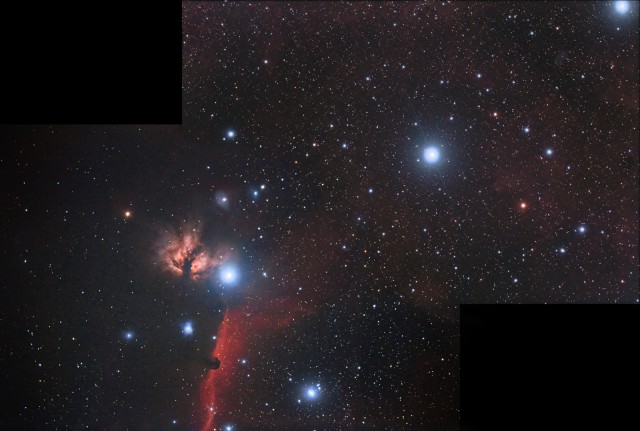
Here’s one that’s in progress. I shot this area over two nights. I have very little of the Horse Head region from these sessions, but another 40 subs of the belt stars upper frame area. I should be able to put something together with other data from older sessions and get a somewhat complete mosaic image. (Update: Yes, I was able to add some old data and smooth it out.)
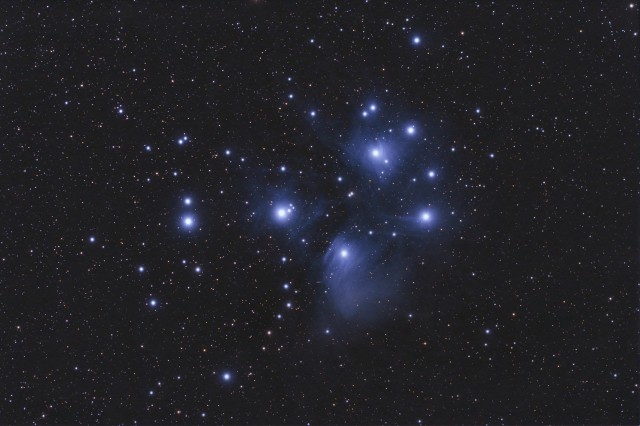
I had time to kill while waiting for Orion to get into position, so I shot 40 x 2 minute sub-images of the Pleiades at ISO 3200. I did not spend much time in post processing this, but it came out half-decent regardless.

Over 3 hours worth of data in 5 minute ISO 1600 sub-images were used for this image of the PacMan Nebula. It came out alright, I guess. I didn’t have to do much noise reduction on it and it still seems reasonably smooth.
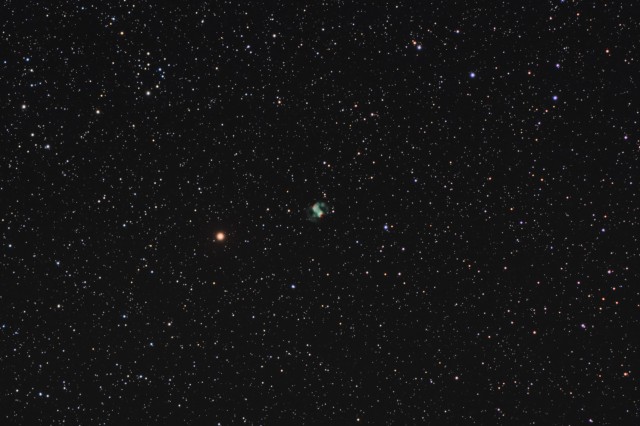
Here is the “Little Dumbbell” Nebula, otherwise known as Messier 76, NGC 650/651, the Barbell Nebula, or the Cork Nebula. It is a planetary nebula in the constellation Perseus. I had never imaged it before, so now I finally got something on it.
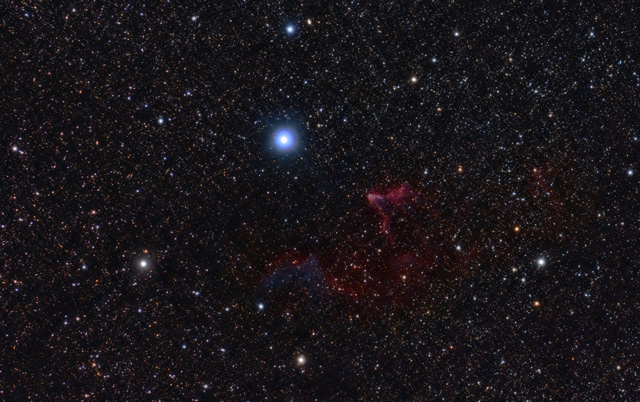
The Gamma Cass area with the, “Ghost Nebula” (IC63) was an appropriate target for this time of year with Halloween just around the corner. This was actually just a test run for how well ISO 6400 would work with 80-100 sub-images. Click the image for an enlargement or click here to see the full size version.
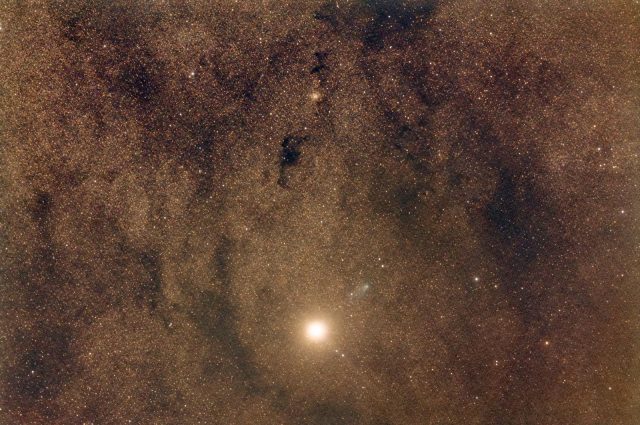
Update October 20, 2014: The above image is an update with more time added. Compare it to the image below which was made with only 20 minutes of data shot at ISO 6400 (20×60 sec sub-images.) I took an additional 30 minutes of 3 minute sub-images at ISO 1600 and added it in, so the combined total is 50 minutes.
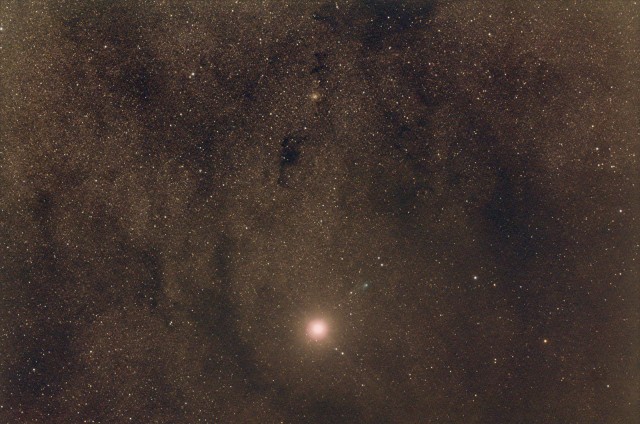
Well, the big comet encounter of the year took place tonight, Oct 19, 2014 and Mars and Comet Siding Spring (C/2013 A1) both survived. LoL. Seriously, it was a very close encounter if you had darkness when it was closest. Here in southern Louisiana, it took place during daylight, so I had to catch it after closest approach as C/2013 A1 was bidding Mars farewell.
I had a strange night with some issues, but I managed to get some decent data and also lucked out with some good weather for this event. This image is from the first set of images I took and it is a composite of comet-only processed and star background processed image stacks. The comet moved a good distance in the twenty-five minutes it took to get the sub-frames, so I had to isolate it with different alignment and stacking techniques than I use for normal deep-sky images.